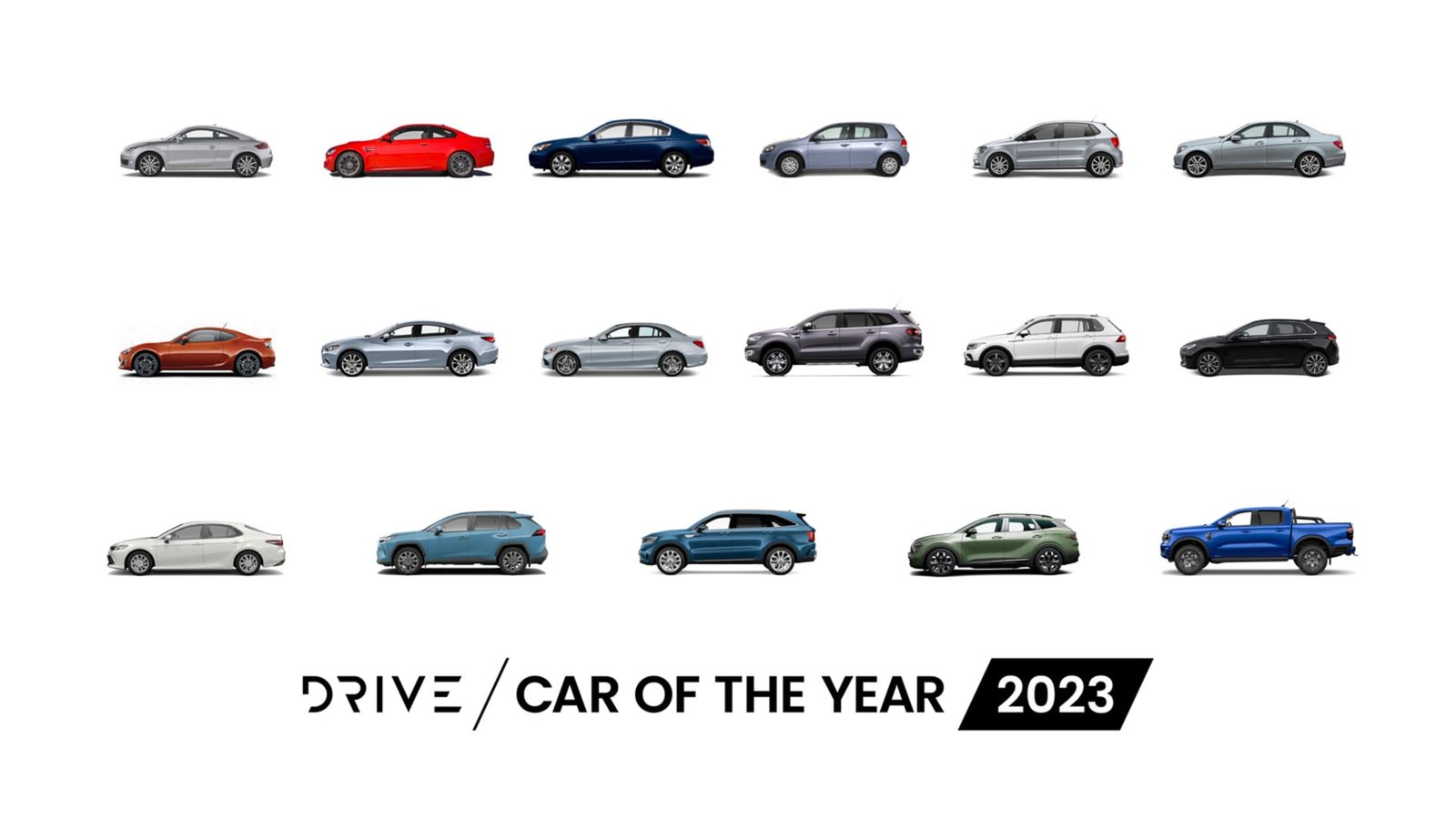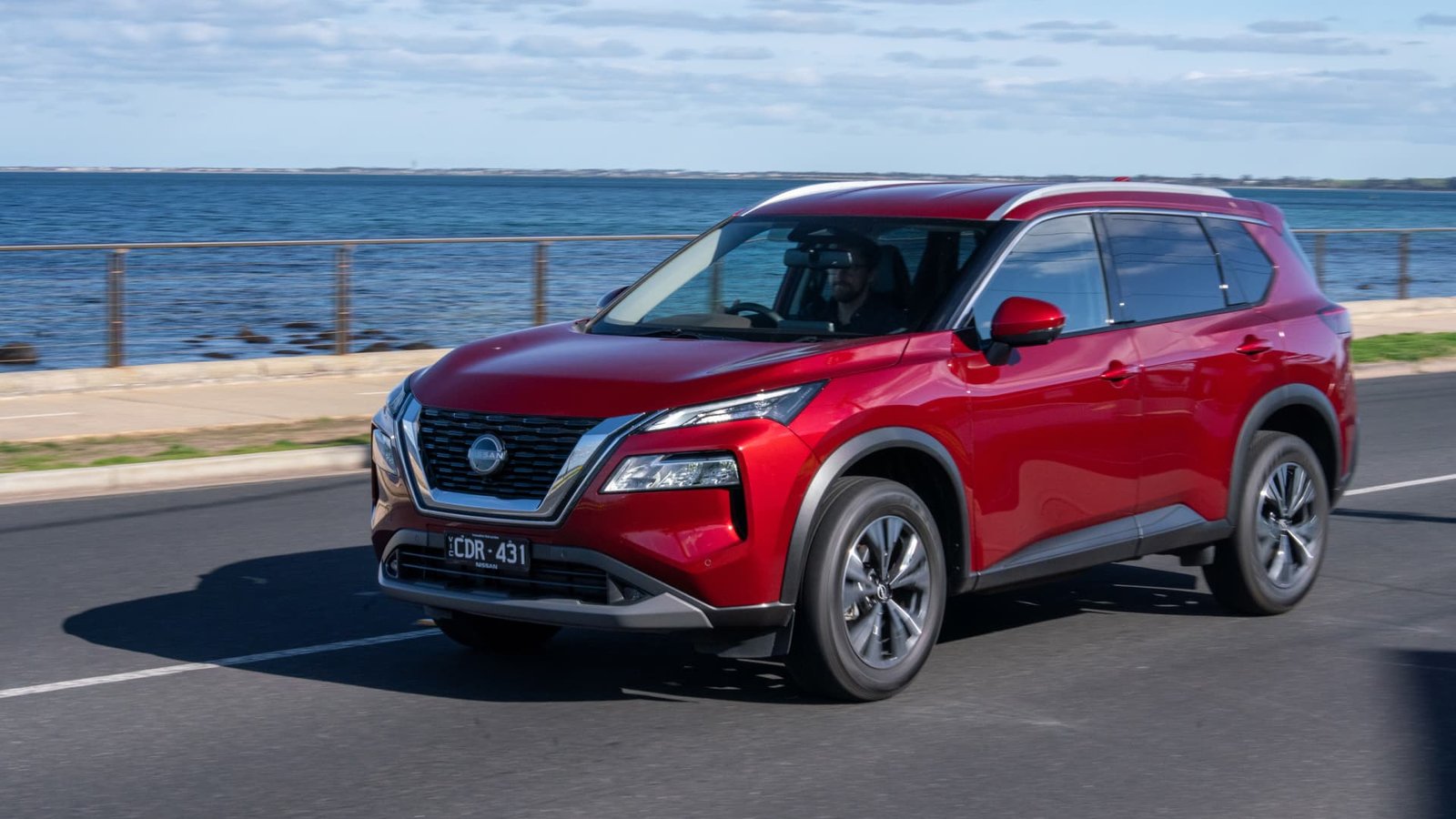[bsa_pro_ad_space id=14]
Electric vehicles are shaking up the automotive status quo, and they’re also impacting Drive Car of the Year, Australia’s longest-running consumer automotive award.
Drive’s annual Car of the Year awards program is getting its biggest refresh in a decade, and we’ve got electric vehicles to thank for it.
As you’ll read below, we’re normalising EVs this year, but that’s far from the only update as we continue the refinements that make Drive Car of the Year the Australian new car buyer’s most powerful weapon. This year’s awards program sees nine categories introduced or updated and three categories retired – including two enthusiast favourites – as Drive Car of the Year evolves apace with consumer tastes and expectations.
We’re also expanding our testing program and drilling further in each category to ensure that Drive Car of the Year remains the most rigorous and incisive spotlight on new car value, quality and competence. From next Monday November 13, we will take a closer look at each of the 18 categories. We’ll also highlight the new and updated cars that will give the judges a hard time as they fight for the coveted title of Australia’s Best.
For now, let’s go through the major changes and explain why they’re necessary.
Electric Vehicles break into the mainstream
This year, we are normalising Electric Vehicles. That’s right, EVs will no longer be segregated from the mainstream; they are the mainstream as far as Drive is concerned and should be assessed that way. The justification for this is simple: Australians increasingly see electric vehicles as a natural alternative to cars with internal combustion engines. So, we need to compare and consider them accordingly.
That said, Australian new car buyers fall into two camps: those who want the best car for their needs, and those who want the best EV for their needs. Take Medium SUVs, for instance. For the first time, Australian consumers with a $50,000 budget can choose petrol, diesel, hybrid and pure electric powertrains. The same goes for City Cars and Small Luxury SUVs, and it’s only a matter of time before EVs penetrate other prominent market segments.
So we’re giving EVs the right to compete in the vehicle class they belong to, irrespective of powertrain. But we also know that some consumers restrict their choices to EVs only. So, to cater to those buyers, we’re maintaining four EV-only categories.
This does give EVs two bites at the cherry, which some may view as unfair. Consider it a transitional anomaly. In 2025 or 2026, we expect EVs to have transitioned from alternative to mainstream in most consumers’ eyes.
There can be only one winner
In previous years, we’ve crowned entire model ranges as winners in mainstream categories. We know that highlighting an entire car range as a category winner helps consumers head in the right direction, but it leaves an obvious question unanswered: Which variant is the best to buy? This year, we’ll answer that question, too.
This year, we will shine the Drive Car of the Year spotlight on the specific variant in each winning range that our judges deem the best value for money.
Eighteen categories, five new and updated
We’ve evolved some categories and adjusted the price band of others to better cater to the wide range of consumer tastes and budgets, and so we can provide more targeted advice to more Australians.
Three categories from last year are not returning this year, for very different reasons. The first is Best Medium to Large Car because there was no new or significantly updated model activity in this class for the third year running, perhaps a reflection of a 60 per cent sales decline over the last decade?
The second and third categories to be benched are potentially more controversial, but we’ve done it with a higher purpose in mind. Read on…
We’ve mothballed our two performance car categories – Best Hot Hatch and Best Sports Coupe – which wasn’t an easy decision. These cars are the emotional pulse of Australian auto enthusiasts.
But “emotion” is ultimately why we decided to withdraw them from the Drive Car of the Year program. Emotion plays a minimal role in Drive Car of the Year evaluation. Instead, we’re led by our heads when weighing the merits of the contenders.
Put simply, subjecting emotional machines to the pragmatically-focused lens of Drive Car of the Year is like picking a restaurant based on the quality of its plumbing. The only time dynamic prowess delivers a result is if a car drives so poorly we wouldn’t wish it on our landlord’s lawyer’s mother-in-law.
Instead, we’ll hold a separate sports and luxury celebration sometime in 2024 that frees these cars from practical constraints and recognises the emotional highs they deliver to drivers.
Drive Car of the Year’s constant drive for improvement has triggered an expansion of the testing program to more fully encompass the entire year. In previous years, we would gather the 50+ contenders together in one place for a week of intensive testing. This year, we’re putting more emphasis on our regular in-year road-testing program by requiring our reviewers to consider a vehicle’s merits against the Drive Car of the Year criteria each and every time they drive one.
In reality, this means that more judges will spend more time judging eligible vehicles than is humanly possible in one single testing week, no matter how intensive that week is. For example, we may test drive a particular model four or five times throughout the year in all its variations, plus any launches we attend and comparisons we conduct.
This means that every time a car is driven by a judge, it is being assessed for Drive Car of the Year.
One thing is not changing
Drive’s Car of the Year awards program is about highlighting the best new cars for Australian consumers. It is Australia’s most comprehensive awards program and, therefore, is the only one you should trust with your next purchase decision.
So bookmark this page and return here from November 13 as Drive rolls out the contenders for the 2024 Drive Car of the Year awards.
[bsa_pro_ad_space id=15]








